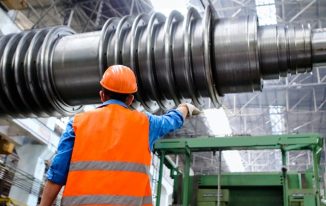In manufacturing, efficiency is key to reducing costs and accelerating production timelines. Injection molding has emerged as one of the most reliable methods for producing high-quality parts at scale, benefiting a variety of industries, from automotive to consumer electronics. This process enables companies to create complex components with remarkable precision, making it an ideal choice for businesses aiming to streamline operations. Here’s how injection molding stands out as a cost-effective and time-saving solution.
1. The Basics of Injection Molding
Injection molding is a manufacturing process that involves injecting molten material—typically plastic—into a mold to create parts with specific shapes and details. Once the material cools and solidifies, the mold opens to release the finished part, and the process begins again. This cycle allows for the rapid production of identical parts, which is ideal for large-scale manufacturing.
The ability to produce multiple identical parts quickly without compromising on detail or quality is one of injection molding’s main advantages. The process is particularly well-suited for items that require consistency and durability, such as plastic enclosures, automotive components, and medical devices. By reducing the time spent on each part, injection molding is a highly efficient production method that aligns well with lean manufacturing principles.
2. Reducing Material Waste
One of the biggest advantages of injection molding is its potential for minimizing material waste. Traditional manufacturing processes, like machining or casting, often leave behind excess material that needs to be discarded or recycled, adding extra costs. Injection molding, on the other hand, is a more precise process that typically only uses the exact amount of material needed for each part.
Modern techniques like injection molding can optimize material usage even further. The technique of scientific injection molding relies on precise control of variables like temperature, pressure, and cooling time, ensuring that each part is produced with minimal waste. This approach not only reduces excess material costs but also aligns with sustainable practices, which are increasingly important in today’s environmentally-conscious market. Using only the necessary material helps manufacturers save money on resources, making injection molding a cost-effective choice.
3. Faster Production Times
Time is a critical factor in manufacturing, and injection molding offers a significant advantage in terms of speed. With cycle times ranging from a few seconds to a couple of minutes, depending on the part’s complexity, injection molding allows for the rapid production of parts. The consistent cycle times make it easier to predict production outputs and meet deadlines.
For businesses working on tight schedules, this method can drastically reduce the time needed to complete large production runs. The quick turnaround associated with injection molding is invaluable for industries like consumer electronics and automotive manufacturing, where keeping up with demand is crucial. Furthermore, the automation capabilities associated with injection molding processes mean that machines can operate with minimal manual intervention, contributing to both speed and efficiency in production.
4. Cost-Effective Labor
One of the lesser-known benefits of injection molding is its potential for reducing labor costs. Since the process is highly automated, it requires fewer operators to oversee production compared to manual methods. Injection molding machines can operate continuously with minimal supervision, allowing manufacturers to redirect labor resources toward other essential tasks, such as quality control or assembly.
The automation involved also ensures greater consistency across parts, which reduces the need for rework or adjustments. By minimizing human error, injection molding helps maintain consistent quality and reduces the costs associated with labor-intensive processes. For businesses seeking ways to optimize budgets, the labor efficiency offered by injection molding can lead to substantial cost savings over time.
5. Enhanced Design Flexibility
Injection molding offers an impressive level of flexibility when it comes to part design, allowing manufacturers to create highly intricate shapes with precision. Modern computer-aided design (CAD) technology makes it possible to design complex parts that are tailored to meet specific requirements. The use of molds means that these designs can be replicated quickly and consistently, no matter how detailed they are.
This flexibility is particularly advantageous when designing parts that require specific functionalities or aesthetics. With injection molding, manufacturers can easily modify mold designs to accommodate new product features, which is often far more cost-effective than retooling a machine for custom parts. For businesses looking to introduce product variations, this adaptability allows for an economical way to meet changing market demands without sacrificing quality.
6. High Durability and Quality
When it comes to durability, injection-molded parts stand out for their strength and resilience. This process creates parts that can withstand wear and tear, making them suitable for high-performance applications. Injection molding’s ability to produce robust components reduces the likelihood of defects, translating to fewer returns and replacements—a crucial factor for both cost savings and brand reputation.
The precision inherent in injection molding ensures that each part meets strict quality standards. Manufacturers can rely on consistent dimensions and shapes, which is critical for industries that require exact specifications. High-quality parts lead to lower maintenance costs and fewer issues down the road, further increasing injection molding’s cost-effectiveness for long-term production.
Injection molding is a powerful solution for manufacturers aiming to reduce costs, increase production speed, and maintain high-quality standards. From optimizing material usage with injection molding techniques to reducing labor and maintenance costs, the benefits of this method make it a popular choice across industries. By investing in injection molding, companies can maximize efficiency and focus on delivering high-quality products without stretching budgets or timelines. For those looking to streamline production, this method offers a time-tested solution that meets both financial and operational demands.





